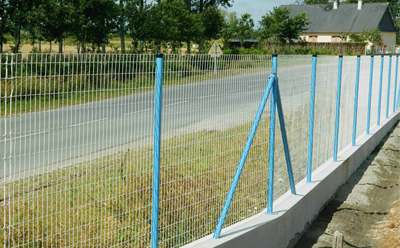prestressed concrete steel strand
Nov . 20, 2024 07:42
The Role of Prestressed Concrete Steel Strand in Modern Construction
In the realm of civil engineering and construction, the quest for building materials that offer strength, durability, and significant flexibility has continued to evolve. Among these materials, prestressed concrete has emerged as a revolutionary technique, and at its core lies the component known as steel strand. This article delves into the fundamentals of prestressed concrete steel strand, its applications, advantages, and the future of this critical construction element.
Understanding Prestressed Concrete
Prestressed concrete is a method that involves the intentional introduction of internal stresses to counteract the stresses that will be imposed on the structure during its service life. This is achieved by tensioning steel strands, which are embedded within the concrete before it is subjected to any loads. By preloading the concrete elements, engineers can enhance their load-bearing capacity, reduce deflections, and improve overall structural performance.
The Composition of Steel Strand
Steel strands, typically made from high-strength steel, play a pivotal role in the prestressing process. They can be produced in various sizes and configurations, allowing for flexibility in design and application. Generally, these strands come in bundles and are available in either single or multiple wire configurations, with diameters ranging from 5.0 to 15.0 mm, depending on the specific requirements of the project.
The high tensile strength of steel strands—often exceeding 1,800 MPa—ensures that they can withstand heavy loads and resist deformation. This property is paramount for the structural integrity of prestressed concrete components, enabling architects and engineers to design longer spans and more complex shapes without the need for excessive material.
Applications in Construction
Prestressed concrete steel strands are widely used in various construction applications, including bridges, buildings, parking garages, and water treatment facilities. Their ability to handle tensile stresses makes them particularly valuable in bridge construction, where long spans are necessary. The inherent qualities of prestressed concrete, combined with the strength provided by steel strands, allow for increased safety margins and extended service life of infrastructures.
In residential and commercial buildings, prestressed concrete slabs provide a robust flooring solution that can accommodate heavier loads while minimizing deflection and cracking. This makes it an ideal choice for high-rise construction, where the weight of multiple floors demands superior material characteristics.
prestressed concrete steel strand

Advantages of Prestressed Concrete Steel Strand
One of the most significant advantages of using prestressed concrete steel strands is the reduction of material usage. By optimizing the distribution of forces within the concrete, less material is required compared to traditional reinforced concrete. This not only results in cost savings for construction projects but also contributes to more sustainable building practices.
Additionally, prestressed concrete structures exhibit superior performance against cracking. Since the strands are pre-tensioned, they mitigate tensile stresses that would typically cause concrete to fracture. As a result, these structures tend to have a longer lifespan and require less maintenance over time.
The ability of prestressed concrete to span larger distances without support enables architects to create more open and flexible spaces, enhancing the aesthetic and functional potential of buildings. Consequently, this innovation has transformed how we approach design and construction in urban environments.
The Future of Prestressed Concrete Steel Strand
As construction technology continues to advance, the potential for prestressed concrete steel strands to innovate the industry remains significant. Ongoing research focuses on improving the materials and techniques associated with prestressing, including the development of even higher strength strands and the incorporation of advanced composites.
Moreover, the integration of digital modeling tools and automation in the manufacturing process is likely to enhance the precision and efficiency of structuring prestressed concrete elements. As sustainability becomes an ever-pressing concern, the continued evolution of this method will play a key role in reducing the environmental impact of construction.
Conclusion
Prestressed concrete steel strands are indispensable in modern construction, combining strength, versatility, and efficiency. As they continue to evolve, paving the way for future advancements in building infrastructure, the importance of understanding their properties and applications cannot be overstated. The growth of this technique reflects not only a technical achievement but also a commitment to enhancing the durability and functionality of the world’s infrastructure.




















